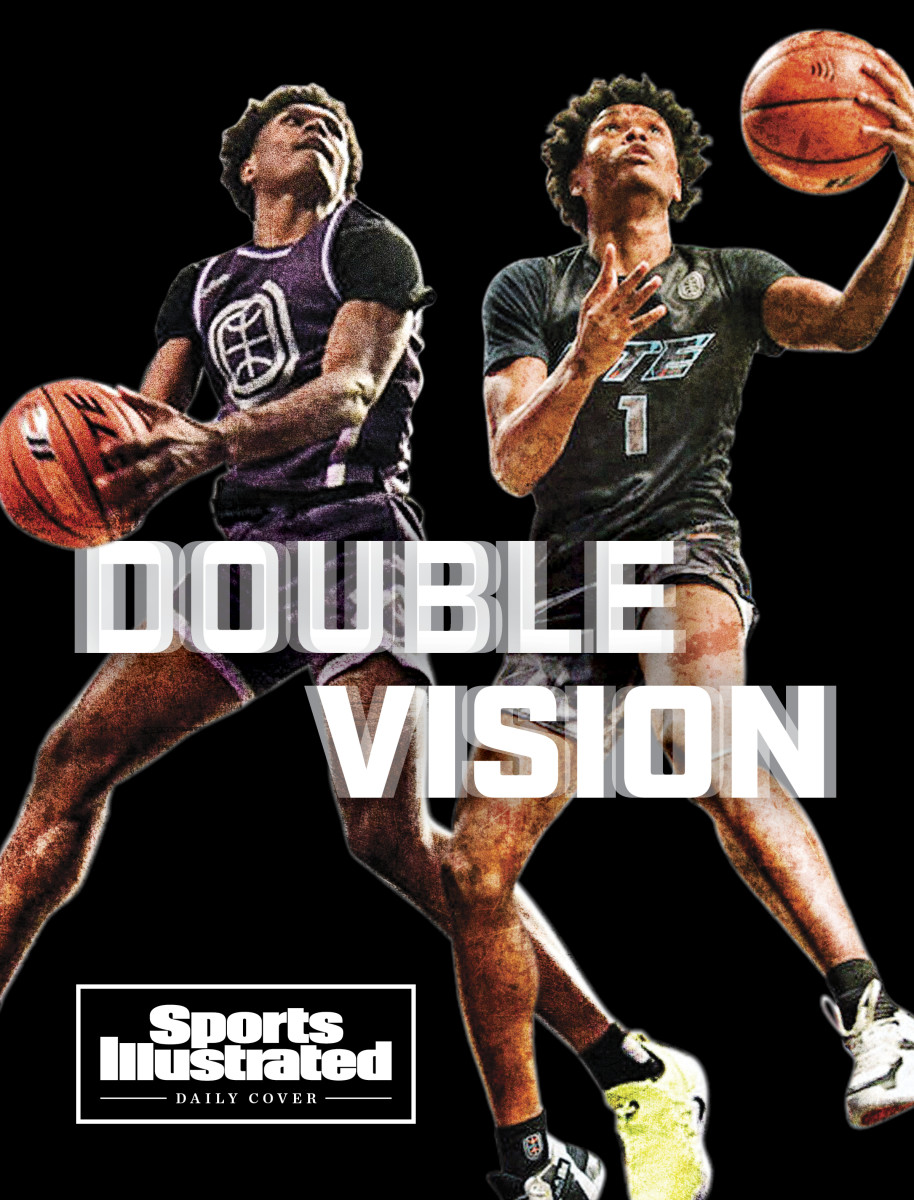SI:AM | March Madness Is Already Well Underway
Good morning, I’m Dan Gartland, and I’m buzzing with anticipation for the next month of college hoops.
If you're reading this on SI.com, you can sign up to get this free newsletter in your inbox each weekday at SI.com/newsletters.
The month is just getting started

The first weekend in March is a weird one in college basketball because of the disjointed schedule. Some conferences are wrapping up their regular seasons while some are playing conference tournaments. It can be a bit confusing. But if you were able to properly keep track of the stakes, yesterday was a perfect appetizer for the huge men’s and women’s matchups still to come later this month.
Here are some of the biggest games from yesterday:
🏆 SEC women’s tournament final: South Carolina vs. Kentucky
The Wildcats scored a massive upset over the No. 2 Gamecocks to earn an unlikely automatic bid to the NCAA tournament. Kentucky entered the tournament at 15–11 (8–8 in conference) but strung together wins over No. 6 LSU, No. 18 Tennessee and ultimately second-ranked South Carolina to lift the trophy in Nashville.
The Wildcats previous two upsets (and their opening-round win over lower-seeded Mississippi State) came by fairly sizable margins, but yesterday’s game was a thriller. Dre’una Edwards hit a contested three-pointer with 4.2 seconds left that put Kentucky up by two and South Carolina couldn’t break the Wildcats’ press to get a good look at an answer.
🎟️ Also punching their ticket to the women’s tournament: Stanford, NC State, Iowa, Mercer, UMass, Belmont and Longwood
🚨 UCF vs. Tulsa (men’s regular season)
Neither of these teams is going to the NCAA tournament (barring a Kentucky-like run in the American Athletic Conference tournament), but this game did give us the best buzzer beater of the month thus far. Tulsa’s Jeriah Horne hit a shot from beyond halfcourt as time expired to give the Golden Hurricane a 73–72 win.
🥇 Nebraska vs. Wisconsin and Iowa vs. Illinois (men’s regular season)
The Cornhuskers went to Madison and knocked off the Badgers, 74–73, to deny them the outright Big Ten regular-season championship. It was Nebraska’s first win over a top-10 team since 2014. The bigger story, though, might be the injury to Wisconsin star Johnny Davis. The National Player of the Year candidate was hurt early in the second half on a flagrant foul, and his status for the Big Ten and NCAA tournaments will be worth watching closely.
Nebraska’s win opened the door for Illinois to clinch a share of the Big Ten regular-season title, and it did by beating Iowa, 74–72. The Hawkeyes’ Kris Murray got a good look at a three in the closing seconds but it didn’t fall.
🏆 Missouri Valley Conference men’s tournament final: Loyola Chicago vs. Drake
The Ramblers are headed back to the NCAA tournament for the third time since 2018 after their 64–58 win yesterday. Loyola had the best overall record of any team in the conference but was the fourth seed in the excellently named Arch Madness tournament played in St. Louis. After easily dispatching top-seeded Northern Iowa in the semifinals, the Ramblers won the title behind an 18-point, 10-rebound performance from senior Lucas Williamson. And yes, Sister Jean was there.
This is Loyola’s first season under new coach Drew Valentine. At 30 years old, he’s the youngest head coach in the nation.
🎟️ Also punching their ticket to the men’s tournament: Longwood, Murray State
A quick plug: We're relaunching our Morning Madness newsletter on Selection Sunday (which is somehow in just six days). Sign up for free at SI.com/newsletters to get analysis and headlines from the men's and women's tournaments every morning until the nets are cut down.
The best of Sports Illustrated

Jeremy Woo has the story of Amen and Ausar Thompson, twin brothers hoping to jump from the Overtime Elite team to the NBA draft lottery:
Jaw-dropping dunks, blocks and passes have endeared the Thompsons to online audiences for much of the past several months… They are also the most prominent faces of Overtime Elite’s fledgling operation, which has brought 26 players to Atlanta to live and train full time, while also doubling as limitless content for a massive network dedicated to connecting with youthful audiences.”
Tom Verducci explains how MLB and the players union could use rule changes as a path to a new CBA. … Pat Forde was in Durham for Coach K’s final game and writes that North Carolina’s win strengthened the greatest rivalry in sports. … In honor of his 50th birthday, Michael Pina ranks Shaquille O’Neal’s five best games.
Around the Sports World
New video shows Brittney Griner’s luggage being searched at a Moscow airport before she was detained. … Kyrie Irving likened Celtics fans booing him to a “scorned girlfriend.” … The Broncos are reportedly “all in” on pursuing Aaron Rodgers. … Ex-Arizona State quarterback Jayden Daniels is transferring to LSU.
The top 5...
… things I saw yesterday
5. Cucho Hernández’s bicycle kick goal for Watford against Arsenal
4. This Andrei Vasilevskiy save
3. Nikola Jokić’s 45-point triple double against the Pelicans
2. Glen Davis getting caught on TV trying to steal front-row seats at the Celtics game
1. Kent State softball’s Alex Whitemore getting creative to score a run
SIQ
Shaquille O’Neal, who turned 50 yesterday, wore four different jersey numbers during his career, but what was his preferred number?
- No. 32
- No. 33
- No. 34
- No. 36
Check Monday's newsletter for the answer.
Friday’s SIQ: How did Loyola Marymount’s Bo Kimble honor late teammate Hank Gathers in the 1990 NCAA tournament?
Answer: by shooting free throws lefthanded. Though Gathers was a great player (he led the NCAA in scoring and rebounding in the 1988–89 season and was a projected NBA lottery pick), he struggled from the free throw line. In his final season, he switched from shooting righty to shooting lefty. Kimble said before the tournament that he was going to shoot his first free throw of each game with his left hand.
When Kimble went to the line in Loyola’s first-round game against New Mexico State and sunk his lefty free throw, the crowd erupted. He went on to make all three of the lefty free throws he attempted during the Lions’ run to the Elite Eight.
Gathers had been diagnosed with an irregular heartbeat after fainting during a game against UC Santa Barbara on Dec. 9, 1989. He was prescribed medication to treat arrhythmia but didn’t like how it made him feel, complaining that it made him moody and fatigued. He felt it had a negative impact on his play, so he convinced his doctor to reduce the dosage. Before his final game, Gathers was seen running sprints on a track outside the gym. A Loyola assistant is quoted in a ’91 SI story as saying that he thought Gathers “was running the medicine off.”
That 1991 article details the fallout from Gathers’s sudden death, particularly the $32.5 million lawsuit filed by his mother. Gathers had grown up in a rough neighborhood in Philadelphia, and his family viewed his likely NBA career as the key to a better future. After Kimble, who attended high school with Gathers in Philly, was taken in the first round of the NBA draft in ’90, he stopped talking with Gathers’s mother, Lucille, and she refused to have Gathers’s jersey retired by his high school on the same night as Kimble’s. Lucille received $895,000 from a wrongful-death lawsuit and Gathers’s son, Aaron Crump, who was 6 when his father died, received $1.5 million.
From the Vault: March 7, 1988

Let’s face it, predictions about sports (by SI or anybody else) go wrong more often than they go right. But the cover story of the March 7, 1988, issue of SI nailed the upcoming baseball season.
“After two disastrous seasons, L.A. is enjoying pennant fever in Vero Beach,” the subheadline read.
The Dodgers had just finished 73–89 in back-to-back seasons but had gone through a serious overhaul before the 1988 season. Only 16 members of the 40-man roster were with L.A. two years earlier. Most of those new faces were brought in via trade, but in ’88 the team took the unusual step of adding high-priced free agents. The Dodgers hadn’t signed a free agent to a multi-year deal since ’79, when it spent $5.1 million on Dave Goltz and Don Stanhouse, who disappointed and were both released by ’82. When Los Angeles was ready to test the relatively new free-agent market again nine years later, outfielder Mike Davis got $1.9 million for two years and Kirk Gibson got a three-year deal for $4.5 million.
The Gibson signing could not have gone better for the Dodgers. He won the MVP and, famously, hit a walk-off homer in the World Series despite two injured legs.
Check out more of SI's archives and historic images at vault.si.com.
